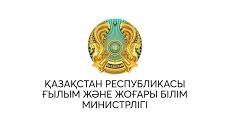Comparative analysis of legal regulation of procurement in the USA and in the Republic of Kazakhstan
DOI:
https://doi.org/10.31489/2025l3/115-124Keywords:
public procurement, procurement by quasi-public sector entities, procurement model, centralized model of public procurement, decentralized model of public procurement, features of legal regulation of procurement by quasi-public sector entitiesAbstract
This article provides a comparative analysis of the legal regulation of public procurement and procurement by quasi-public sector entities in the United States of America and the Republic of Kazakhstan. In the context of globalization and growing competition between states for investment and innovation, issues of regulating public procurement and procurement in quasi-public companies are becoming especially relevant. Kazakhstan, striving to modernize its economy, is carrying out reforms in the field of procurement, including in the quasi-public sector. At the same time, the United States, with its developed system of market mechanisms, demonstrates a different vector of development of procurement procedures. The purpose of the study is to identify key differences and common features in approaches to the legal regulation of public procurement and procurement by quasi-public companies in the United States and Kazakhstan, as well as to determine the advantages and disadvantages of each model in the context of increasing the efficiency, transparency and flexibility of procurement processes. The systems of public procurement and procurement in the quasi-public sector of Kazakhstan and the United States represent two different approaches to the management of public resources: centralized, regulated in Kazakhstan and market, competitive in the United States, which can be called clausal, since there is a dependence on a specific situation, including the source of funding and the legal status of the organization. Despite the presence of common principles, such as transparency, efficiency and anti-corruption measures, differences in the structures, regulation and practice of procurement create unique challenges and problems for each of the countries.




